(32055 products available)






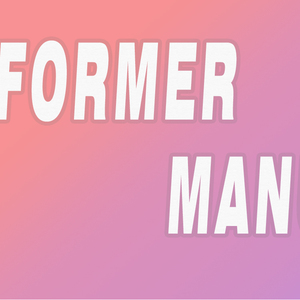































































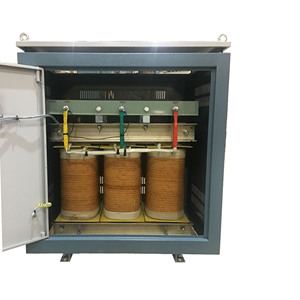
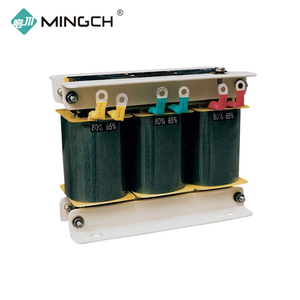





























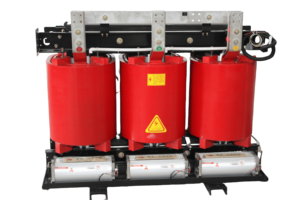










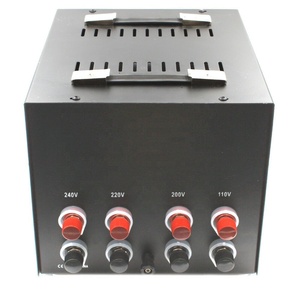



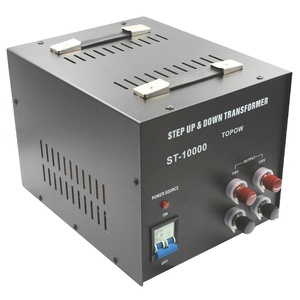



















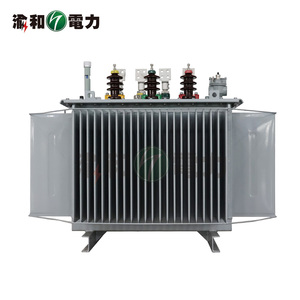

















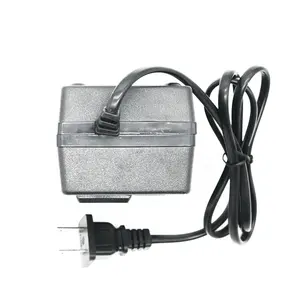
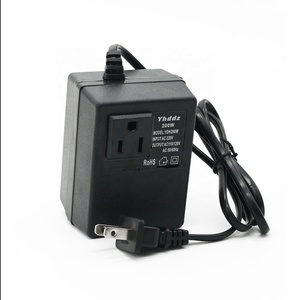







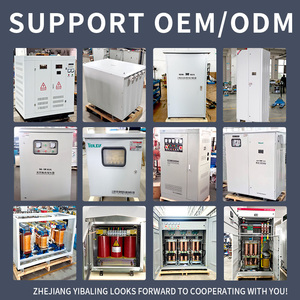


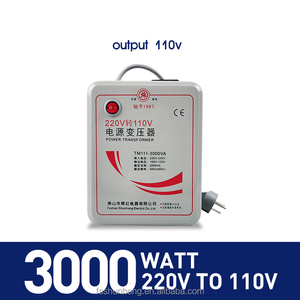
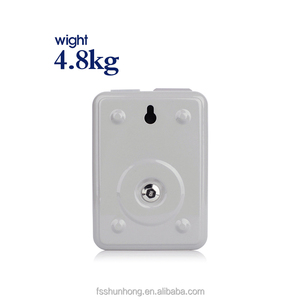














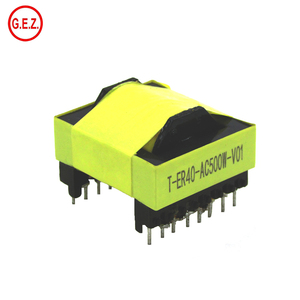






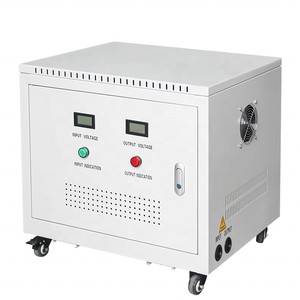


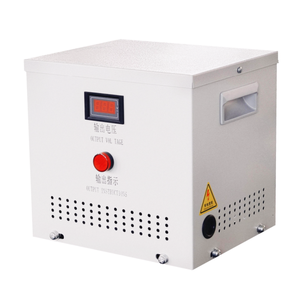

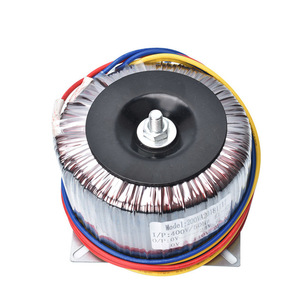











These are examples of -step transformers that increase voltage. They do so by increasing the number of coils in the primary resistor. They are useful for increasing voltage since they decrease current, increasing efficiency during long-distance energy transmission through power lines. This minimizes energy loss by heat due to resistance in wires.
Step-up transformers are widely used in power stations to raise voltages before transmission. They help electrical equipment work at higher voltages. In industries, they also assist equipment that requires higher voltage levels to operate effectively.
These are step transformers that reduce voltage. They decrease the voltage by decreasing the number of coils in the primary resistor. They are used to decrease the voltage levels for safer and more practical use. For instance, the voltage from power lines is too high for residential and commercial use. This is why a step-down transformer is used to reduce it to the proper level.
Household appliances, for example, utilize transformers that decrease voltage to ensure safe electrical consumption within buildings. Step-down transformers are found in large electrical facilities to decrease high transmission voltages to levels usable by local distribution systems.
Unlike other transformers with separate primary and secondary windings, autotransformers use a single winding with tapped points. The winding functioning as both primary and secondary allows some voltage levels to be stepped up or down. They can step up or down voltage as needed, depending on where the taps are located.
These transformers do not change the voltage level. Their main purpose is to electrically separate the primary and secondary circuits while maintaining the same voltage. They increase safety and reduce noise, transients, and interference.
The construction of transformers is because of materials, in part due to their durability and efficiency. Most cores are comprised of silicon steel. This steel is ideal for minimizing energy loss due to heat-inducing resistance during operation.
The coils used contain copper or aluminum to conduct electricity with minimal resistance. Insulation materials like varnished or rigid epoxy keep the coils from electric damage and coil breakdown during high temperatures. Modern transformers use various insulation system technologies, such as impregnated paper or polymer, to enhance temperature resistance and prolong life.
Outdoor transformers use weatherproof and environmental-resistant enclosures. This prevents debris, moisture, and extreme weather from affecting its functionality. This durability is the large outdoor transformers you will see on power lines. They have added structural elements to withstand storms, heavy wind, rain, and other natural weather-related occurrences fall.
The compact indoor transformers use more robust materials to withstand daily wear and tear. These include heat, dust accumulation, and frequent vibrations, as found in manufacturing facilities, commercial centers, and industrial zones.
Cooling is vital to ensure a transformer functions appropriately without overheating. This also enables the transformer to stay at optimal operating levels without losing long-term efficiency. Oil-cooled transformers have better cooling properties than air-cooled ones. This also improves the lifespan of the equipment by helping maintain proper operating temperatures even in high-demand.
For example, the power grid uses large oil-cooled transformers. They require constant efficient operation. Air-cooled transformers are more common in small applications and indoors and are more susceptible to temperature fluctuations.
Then there are the high-temperature-resistant transformers. These are designed to be durable, with high-temperature-resistant insulations.
The transportation of electrical power across large distances calls for the use of transformers. This is because they allow efficient voltage level transitions. They ensure minimal energy loss by heat as electricity travels through power lines. Large power plants use high-voltage transformers to step up the generated voltage for transmission, which power grids, in turn, manage.
Industries use both high and low voltages in their processes. They use transformer steps to change voltage levels as needed by machinery, motors, and other industrial defects. Large manufacturing plants will need transformers for heavy equipment to function. Mines, steel manufacturers, and large manufacturers in need of large power use large transformers and necessitate durability.
In renewable energy sources like solar and wind, electricity generated is in non-utility scale voltages. These voltages require transformers to step up or down to match the power grid voltage levels. This makes transformers crucial for integrating renewable energy into existing power systems. They ensure the electricity being fed into the grid is at the correct voltage levels.
Heating, ventilation, and air conditioning systems come with transformers. These help provide the correct voltage for various components. For example, air compressor motors, fans, and thermostats require changing voltage levels from high utility to low appliance.
Electrical trains, subway systems, and other forms of transport use transformers to step down high transmission line voltages to the safe levels required by train and subway motors. This is essential for the smooth and safe operation of electrical transport systems.
Consider the voltage and current levels. These are important to ensure the chosen transformer operates effectively. Knowing the required power capacity prevents overloading or underutilization. This ensures long-lasting performance with minimal energy loss. Avoiding excessive heat generation is important for longevity. Excessive heat generation can damage the transformer and reduce its functionality.
Look at the application where the transformer will be used. The voltage transition ratio needs assessment to ensure the transformer steps up or down the voltage as required by the system. For example, power generation and distribution use large capacity transformers that manage high power requirements.
Conversely, smaller applications like commercial buildings and HVAC systems require smaller transformers that manage low voltages and currents.
Assess the environment will play a key role in the transformer's longevity. This is because outdoor transformers must withstand weather, temperature, and humidity. They have to be robust enough to handle these conditions. Indoor transformers are not exposed to the same environmental threats.
Cooling requirements are also important to consider, as indoor transformers need proper ventilation.
Some industries are required to follow certain standards for operating efficiency, noise levels, and environmental impact. These standards must be considered when choosing a transformer. Ensure the transformer meets all required safety and performance standards.
Budget is always a key factor in any purchase, and choosing the right transformer is no different. The initial costs include the transformer itself. However, ongoing costs like maintenance, energy efficiency, and cooling requirements must also be factored in. More than just the outlay price to consider, it also has to last and perform correctly, avoiding extra costs in the long run. These are just as vital as ensuring the price aligns with the organization or project's budget.
Regular inspections and monitoring of step transformers avoid or reduce downtime. Checking for any physical damage or abnormal wear and tear while monitoring temperature, oil levels, and vibration will help identify and rectify issues. Keeping the transformer clean to eliminate dust and debris that may cause overheating. Ensure the core and coils are in good shape and properly ventilated.
Oil-cooled transformers need the oil to be routinely checked for any moisture content or dirt, affecting cooling properties. Replace or change the oil as required to maintain proper cooling and lubrication. Lastly, ensure all electrical connections are tight and free of corrosion. Poor connections reduce performance and increase energy loss. Daily checks and adjustments improve the transformer's long-term reliability, ensuring improved performance and preventing electrical outages.
Modern transformers are 98% energy efficient. They are designed to minimize energy loss during voltage transitions by using high-quality materials. The core and winding are made from magnetic-conducting materials that reduce heat-inducing resistance. Smaller transformers are more energy-efficient than larger ones. This is because they operate at lower loads and have lower losses in their coils and core. Proper maintenance ensures energy efficiency, preventing energy loss due to overheating or poor connections.
If the transformer has begun showing excessive rust and corrosion, it may be time to replace it. Poor performance is also a sign to look out for. If there has been an increase in outages or voltage fluctuations, you must get a new one. Frequent overheating is also common in old transformers. When cooling no longer works or constantly overheats, it's time to replace it. And if the cost of keeping the old one around is too high, replacing it and installing a new one will help with performance and reliability.
Transformers are low-maintenance equipment. They have little wear and tear as mechanical parts do. Oil-cooled transformers have less debris and dust than air-cooled ones, requiring less frequent oil changes. The air-cooled transformers may require more frequent cleaning and cooling than oil-based ones. Other than that, regular monitoring and inspection are done to identify any issues early and rectify them. This also helps prevent many electrical outages.
Environmental conditions largely affect the lifespan of a transformer. Outdoor elements like rain, snow, humidity, and temperature reduce the transformer's life once they come in contact with it. Power fluctuations and electrical surges can also damage the coils and windings, affecting the transformer. Heavy vibrations also transfer mechanical shocks to the transformers. Poor ventilation causes them to overheat, which reduces their life span. Regular maintenance eliminates environmental factors that may affect the transformer's life.